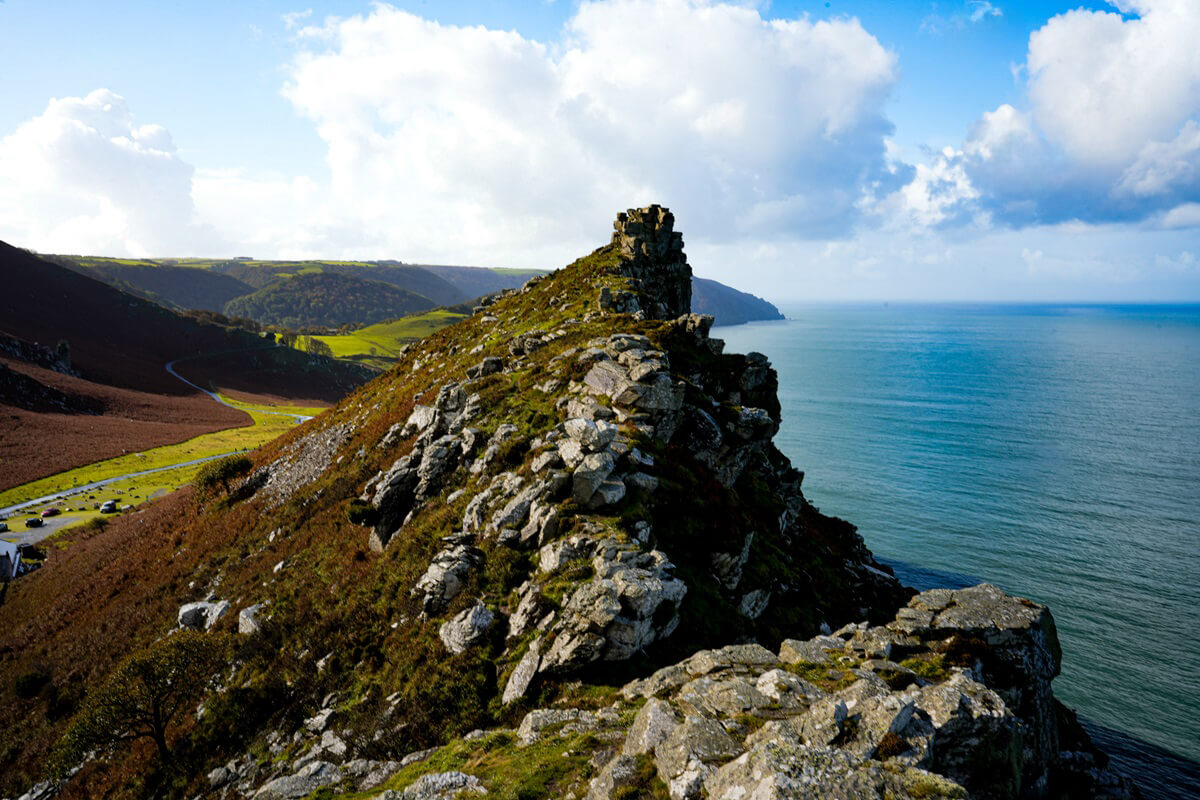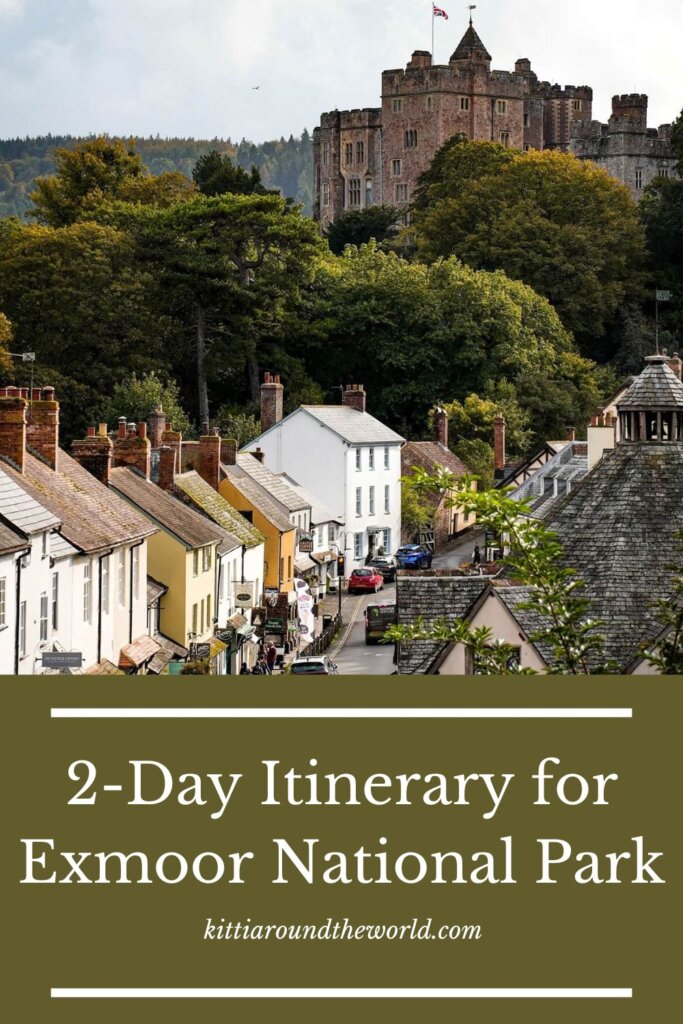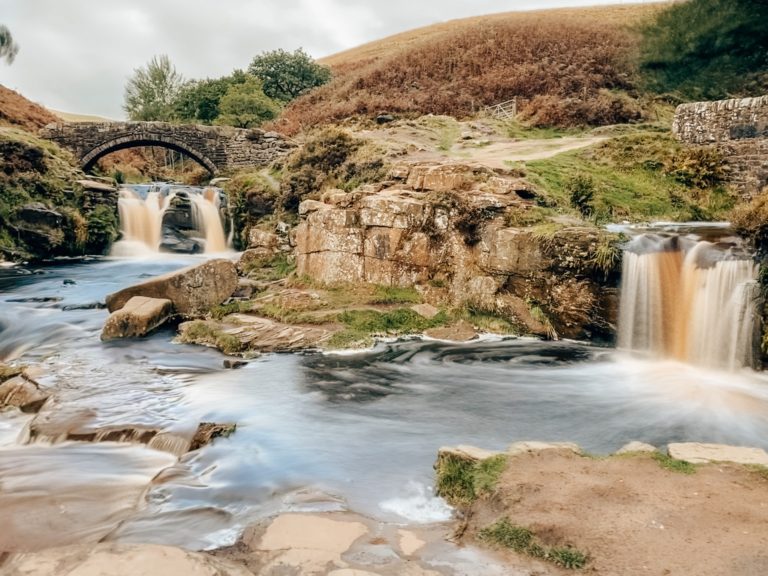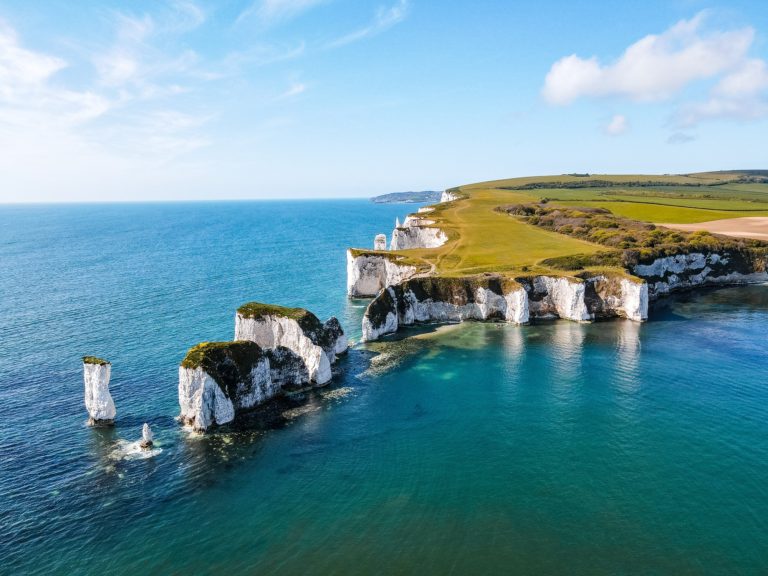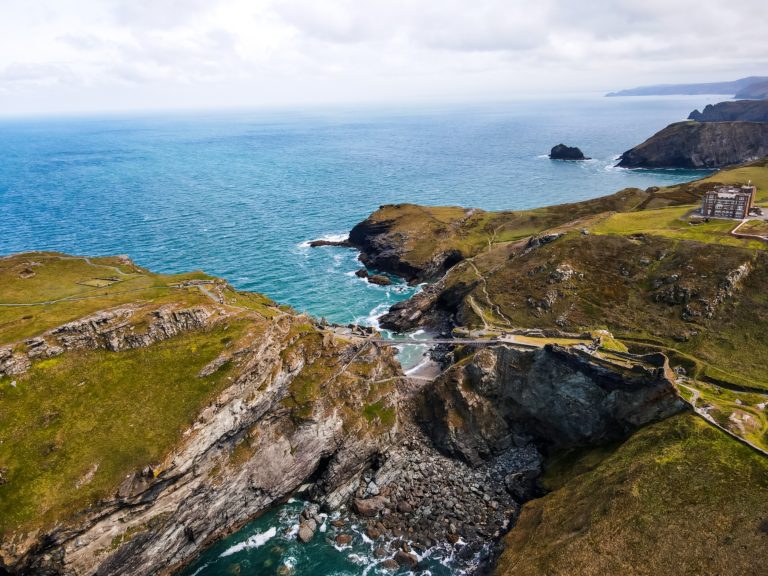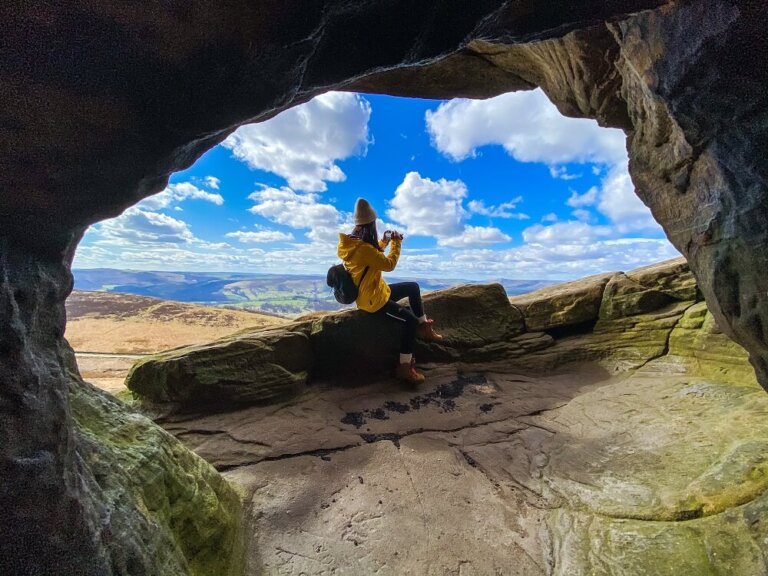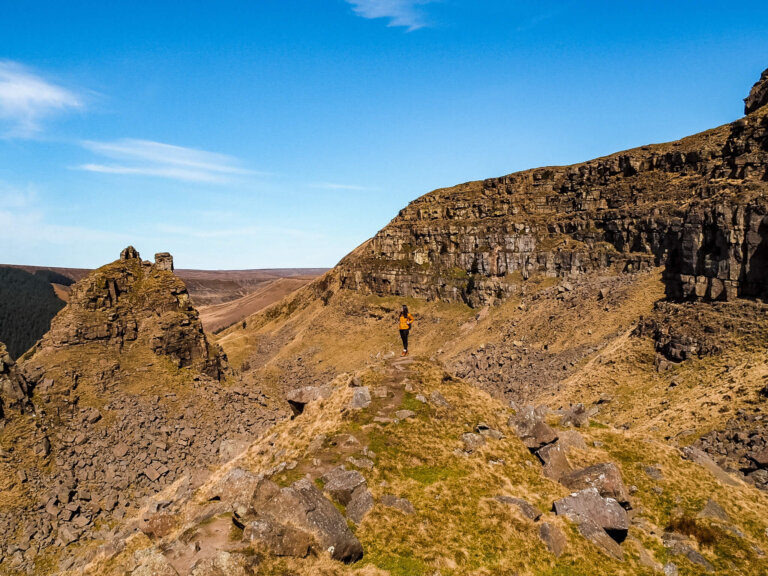How to Spend a Weekend in Exmoor National Park
In this guide you can read about how to spend a weekend in the beautiful Exmoor National Park, one of the smallest national parks in the UK. Despite its size, Exmoor offers visitors a variety of activities thanks to its stunning coastline, valleys, and moorland. It’s also an International Dark Sky Reserve, which provides the perfect spot for stargazing.
Over the years we’ve travelled down to Cornwall, hiked around the Jurassic Coast in Dorset and road-tripped through Somerset. For some reason though, we always skipped Devon. So, after taking a week off work, we decided it was high time to see what Devon had to offer. We visited both Exmoor and Dartmoor National Parks, and had a fantastic time.
Disclosure: This post may contain affiliate links, which means we may receive a small commission if you click a link and purchase something. Clicking these links won’t cost you anything, but it will help us to keep this site up and running! Learn more about our affiliate policy.
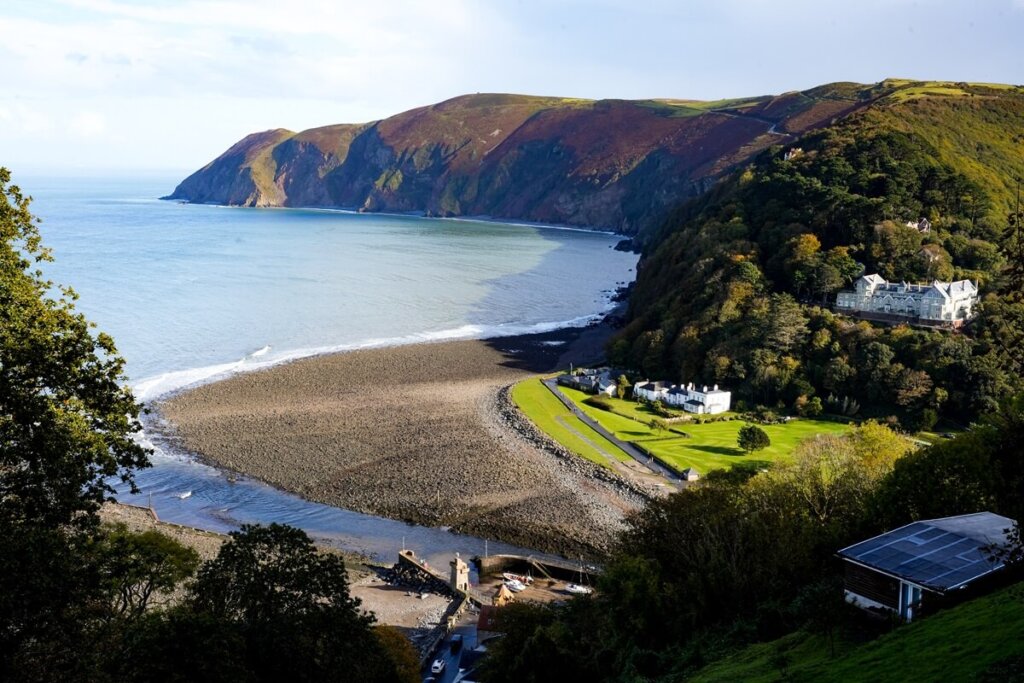
About Exmoor National Park
Exmoor National Park is spread across the west of Somerset and north of Devon in the South West of England. It was designated as a national park in 1954. With an area of 693 square km, Exmoor is one of the smallest National Parks in the UK.
However, don’t be fooled by it’s size. The national park is actually home to a beautiful mix of moorland, valleys and coastal features. In fact, you can find some of the highest sea cliffs on the British mainland in Exmoor. It is also where the 630-mile long South West Coast Path starts, which is one of the UK’s best long-distance walks.
Thanks to its flora and fauna, many areas of the national park have been declared Sites of Special Scientific Interest. In addition, in 2011 Exmoor became Europe’s first International Dark Sky Reserve meaning that it’s one of the few places in the UK where you can enjoy the night sky without worrying about light pollution.
Did you know? Other places like the North York Moors and the Yorkshire Dales, Northumberland National Park and Kielder Water & Forest Park have all been awarded International Dark Sky Reserve status by the International Dark-Sky Association (IDA) since then.
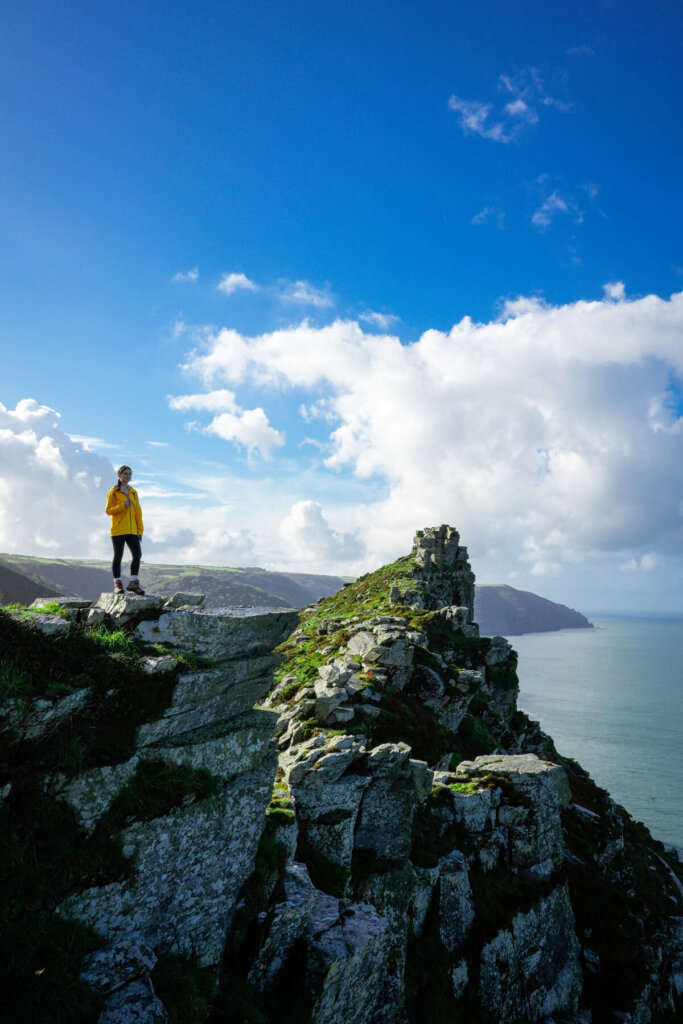
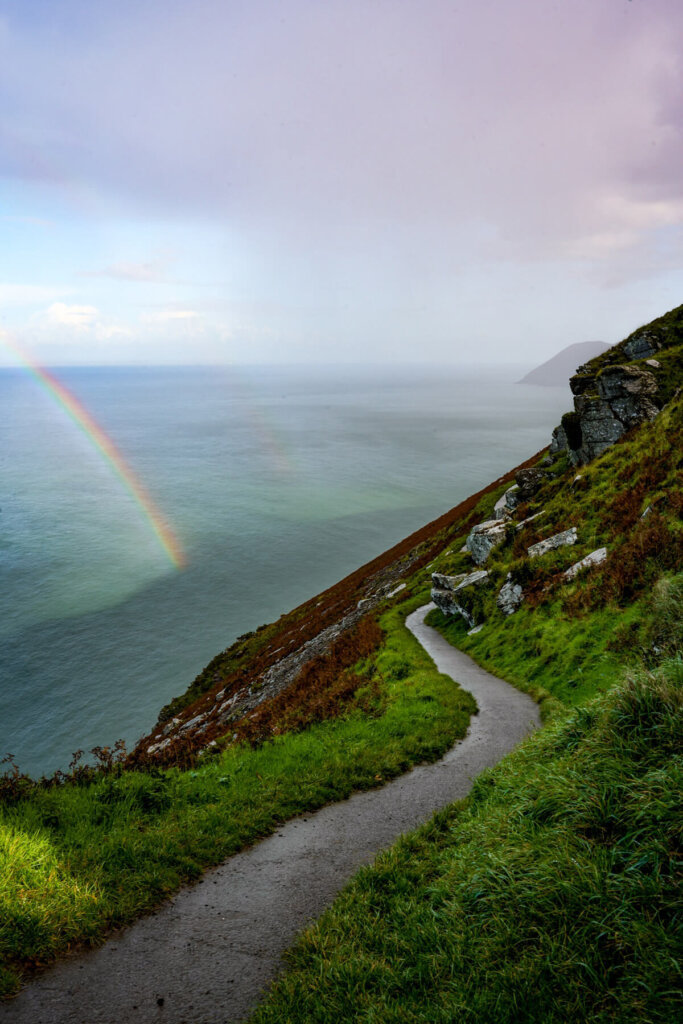
How to Spend a Weekend in Exmoor National Park
1. Visit the Devon Side of Exmoor National Park
Although the area of Exmoor in Devon is much smaller than that in Somerset, we still easily managed to spend a full day there. Below we’ve listed the top places that you should add to your weekend itinerary.
Go Hiking in the Valley of Rocks
A fantastic place to go hiking in Exmoor National Park is the Valley of Rocks. This valley is located along the coastline of North Devon where the River Lyn once used to flow. Today, it’s a dry valley where you can admire some pretty impressive rock formations. Whilst it’s a relatively easy walk to do, it offers some of the most scenic landscapes in the national park. Without doubt, it was our favourite place to visit in Exmoor.
We decided to do an out-and-back walk to the villages of Lynton and Lynmouth. The path that runs along the coast is actually part of the South West Coast Path, of which we have completed many sections during our time in Cornwall and Dorset. You can also go on a much longer walk if you’d like, but since we were short on time we decided to just enjoy the rock formations and see the twin villages.
Along the way we spotted a few goats grazing on the side of the cliffs. They’ve been residents here for centuries, so keep your eyes peeled for them too. You may also see some Exmoor ponies in the area, although we didn’t see any on our walk.
Directions and parking. The Valley of Rocks is located just to the west of the twin villages of Lynton and Lynmouth. You can park either at the Valley of the Rocks Car Park or somewhere in Lynmouth for a longer circular walk option that includes the twin villages.
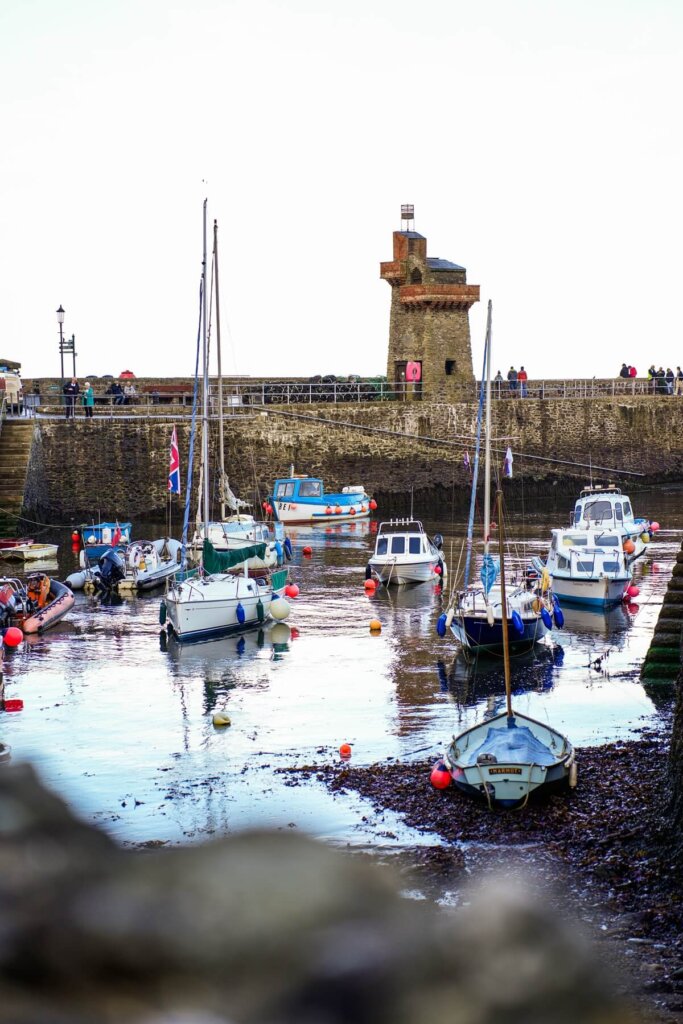
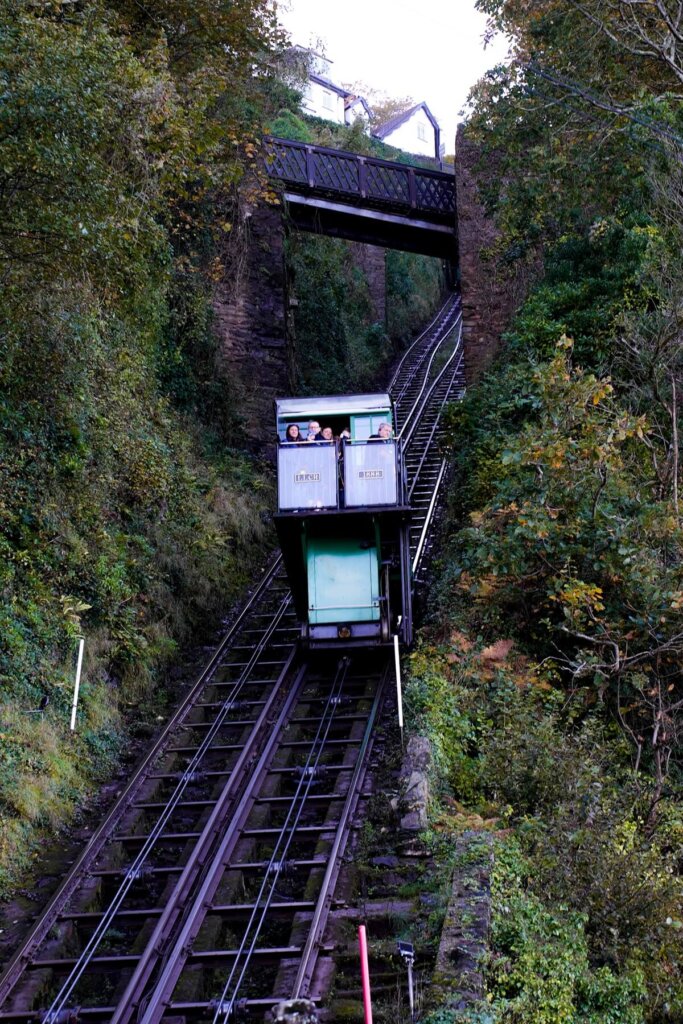
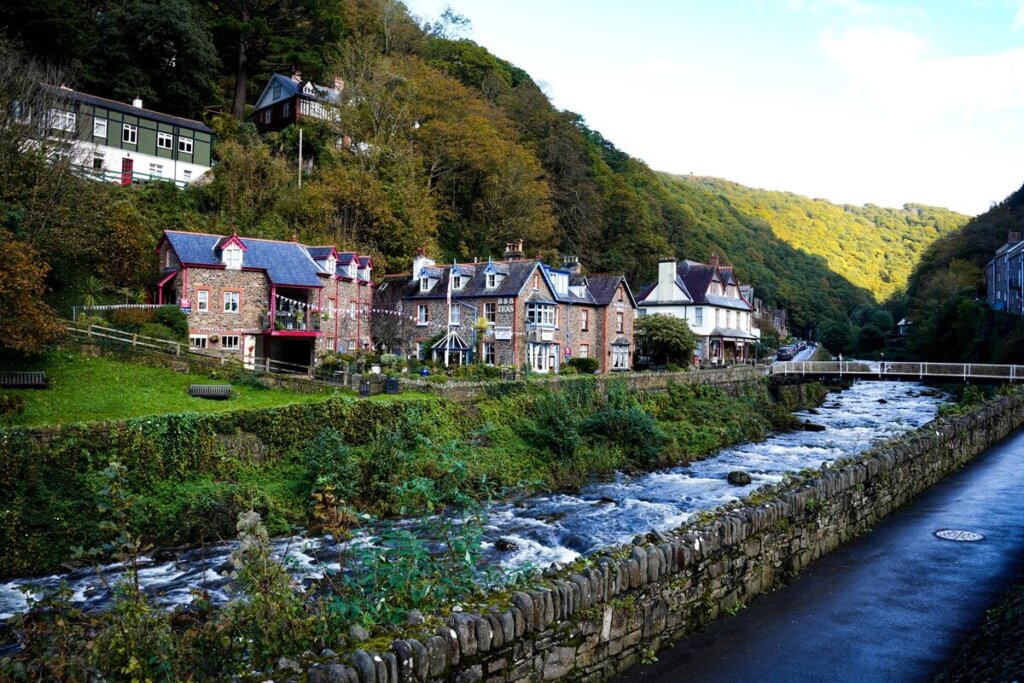
Visit the Twin Villages of Lynton and Lynmouth
If you’re hiking around the Valley of Rocks, then you should also visit the twin villages of Lynton and Lynmouth. We decided to get there on foot from the valley and it was a nice way to combine an outdoorsy activity with a visit to these beautiful coastal villages. We’ve listed a few things to do in Lynton and Lynmouth below.
The most popular thing to do in the twin villages is to ride the Lynton & Lynmouth Cliff Railway. It connects the two villages, where the lower station is located 500ft below the upper station on the cliff top. For this reason, it’s one of the highest and steepest fully water powered railways in the world.
You can walk between the villages via the ‘Poet’s Walk’. Bear in mind that the path is pretty steep going down. We walked down to Lynmouth via the Poet’s Walk, then took a one-way ride back up to Lynton on the railway. Personally, we recommend doing the same if you want to avoid walking uphill.
Visit the Glen Lyn Gorge water exhibition which tells the story of the Lynmouth Flood of 1952 and how the village uses water for renewable energy. (Note that they only accept cash!)
Go on a riverside walk along the East Lyn River. If you have more time, make sure to walk all the way to Watersmeet. Otherwise, just take a shorter stroll along the river.
Directions and parking. You can park at either the Valley of the Rocks Car Park and follow the South West Coast Path to the villages, or park somewhere in Lynmouth.

Enjoy a Devon Cream Tea
You simply can’t come to Devon and not have an afternoon cream tea. If you’re not from the UK, then cream tea is essentially a little afternoon treat that includes a pot of tea, scones, jam and clotted cream.
You may or may not be aware that there is a huge scone debate in England, both on the pronunciation and on how to eat it, and we’re sure that you have your own way of eating a scone too. If you didn’t know, there are two ways to eat a scone: either the Cornish way or the Devon way.
Now, if you put jam on your scone first, then it’s the Cornish way. However, if you put cream first, it’s the Devon method. Needless to say that if you’re eating a scone in Devon, just remember to spread the clotted cream on your scone first.
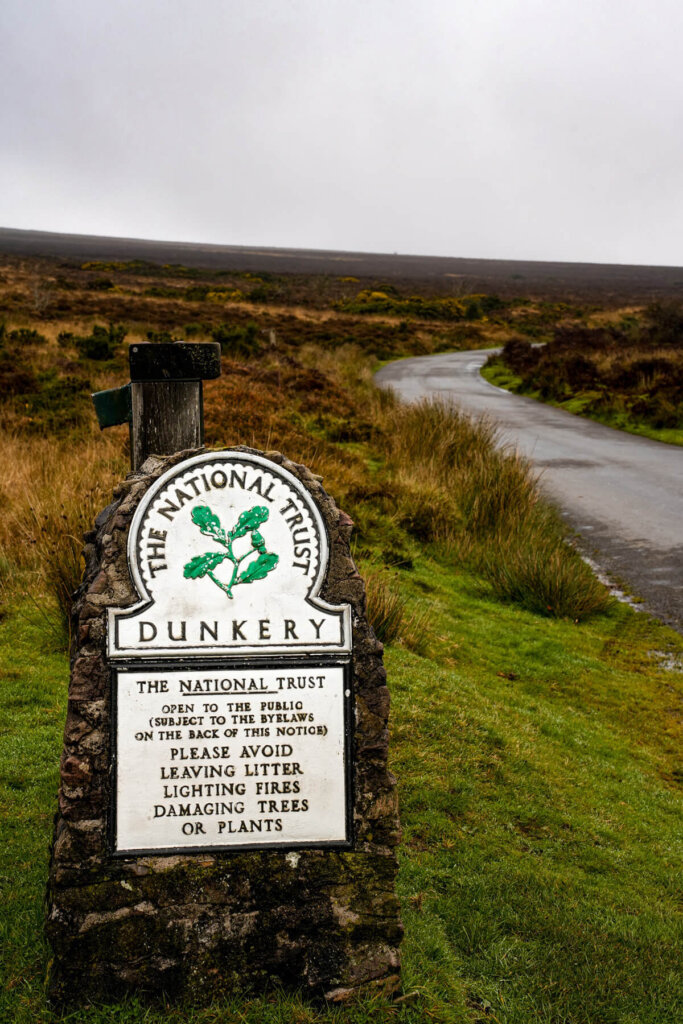
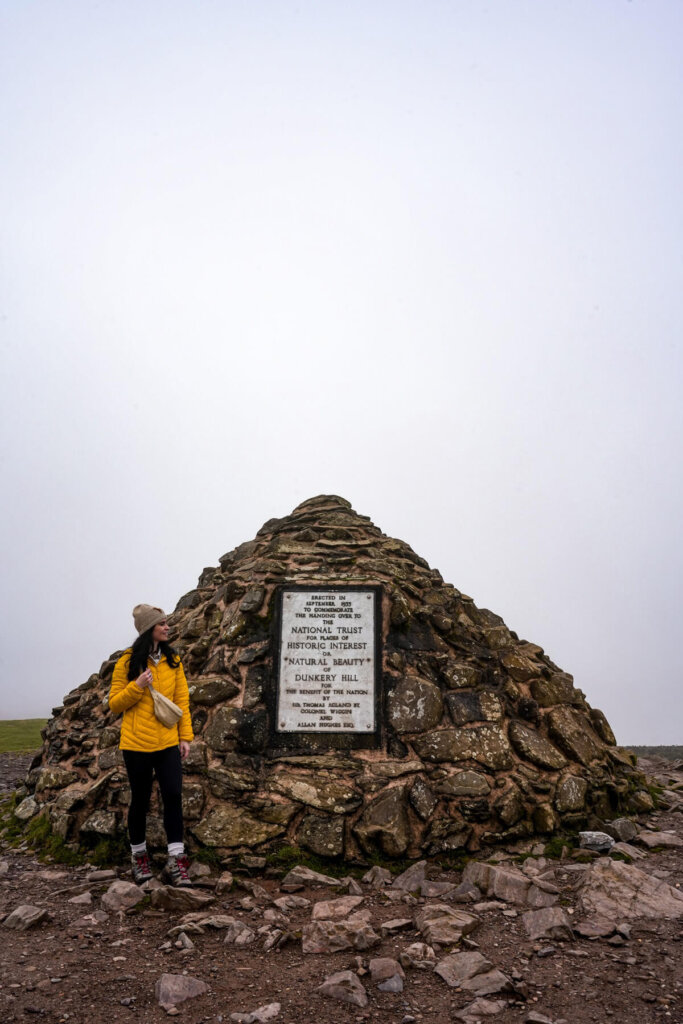
2. Visit the Somerset Side of Exmoor National Park
As mentioned before, the majority of the national park actually falls within the county of Somerset. There are plenty of fun things to do within this part of Exmoor, which we’ll list below to help you create your perfect weekend.
Hike Up to Dunkery Beacon
There are plenty of hiking trails to choose from in Exmoor National Park. However, the 519m high Dunkery Beacon is the highest point in the national park, so in our opinion it’s a great hike to add to your weekend trip. Depending on the weather and how much effort you want to put into reaching the peak, you can do a longer or shorter hike. We visited in October, so hiking through this open moorland meant experiencing all four seasons at once. Although the fog quickly covered the views, it added a moody atmosphere to the place.
Directions and parking. Dunkery Beacon is located to the south-east of the village of Porlock, to the south-west of Dunster and the north-west of Dulverton. The closest place to park is at Dunkery Beacon Parking. From there you can just do a short out-and-back hike, or go on a longer circular one.
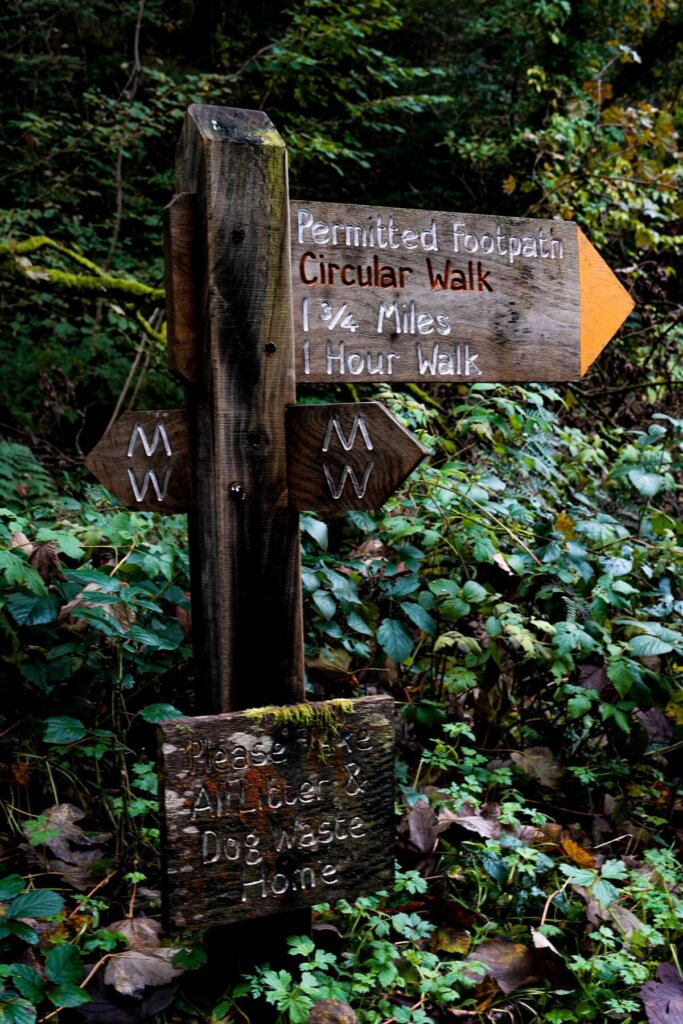

Walk Across the Tarr Steps
Another popular place to visit in Exmoor National Park is the Tarr Steps. This picturesque spot is located along the River Barle to the north-west of Dulverton.
We fully expected to see similar stone steps to the Dovedale Stepping Stones in the Peak District National Park. However, the Tarr Steps is basically a 17 span clapper bridge; aka a stone bridge constructed from large stone slabs and boulders. So we didn’t have to do any hopping like in Dovedale. This, of course, didn’t take away from the beauty of the spot.
Again, you can just walk down to the bridge or go on a 4km long circular walk along the banks of the River Barle, that takes you through woodland and meadows.
Directions and parking. Park your car in Tarr Steps car park and follow the small path running along the single track road down to the Tarr Steps.
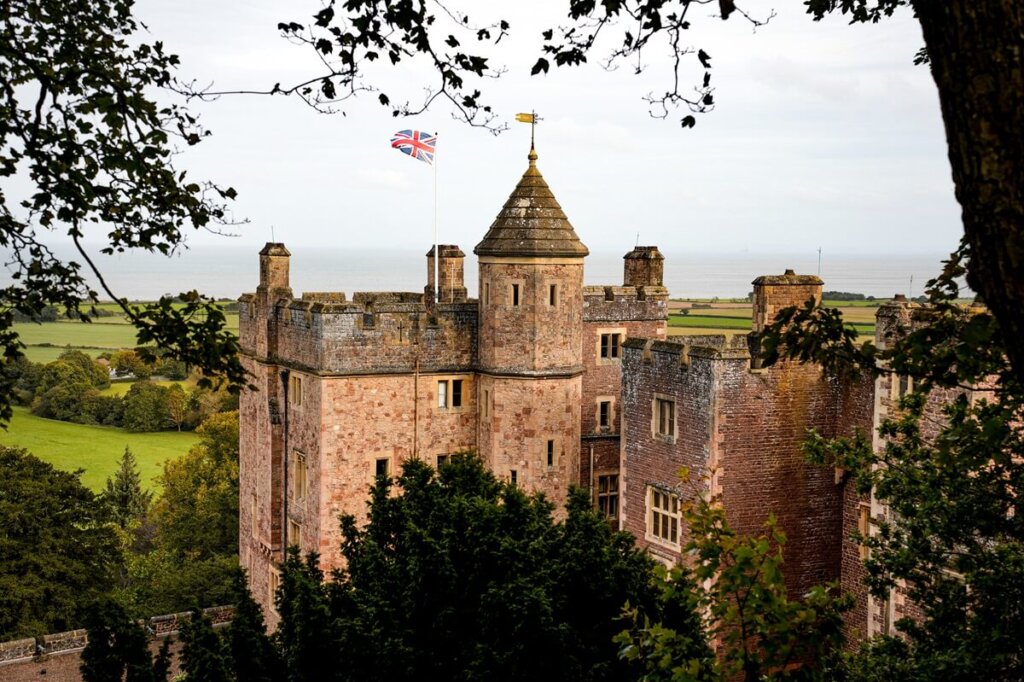
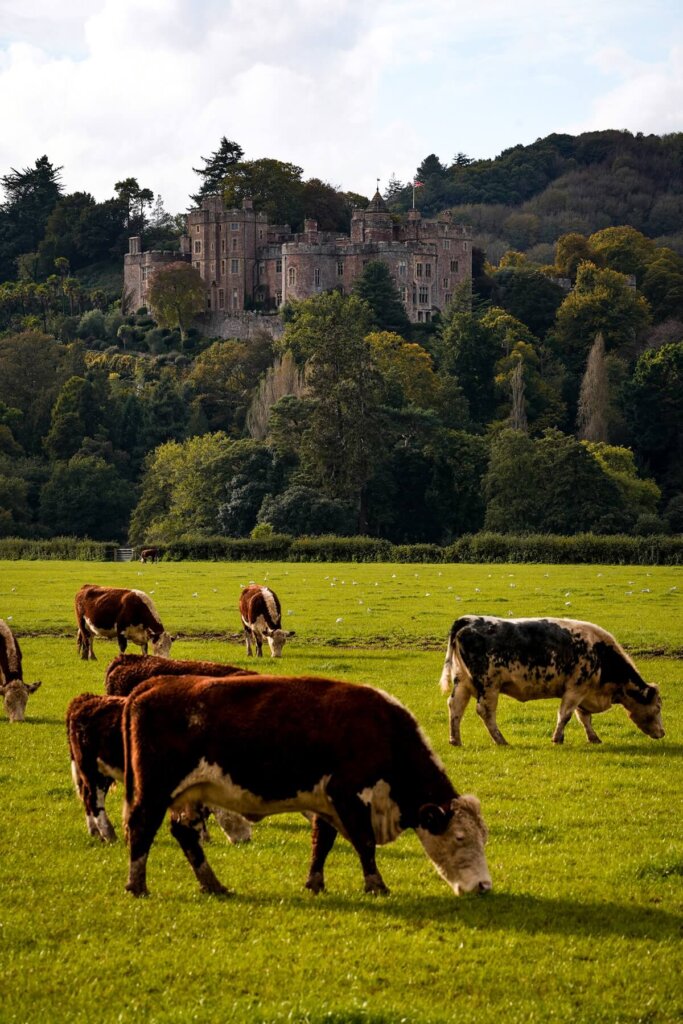
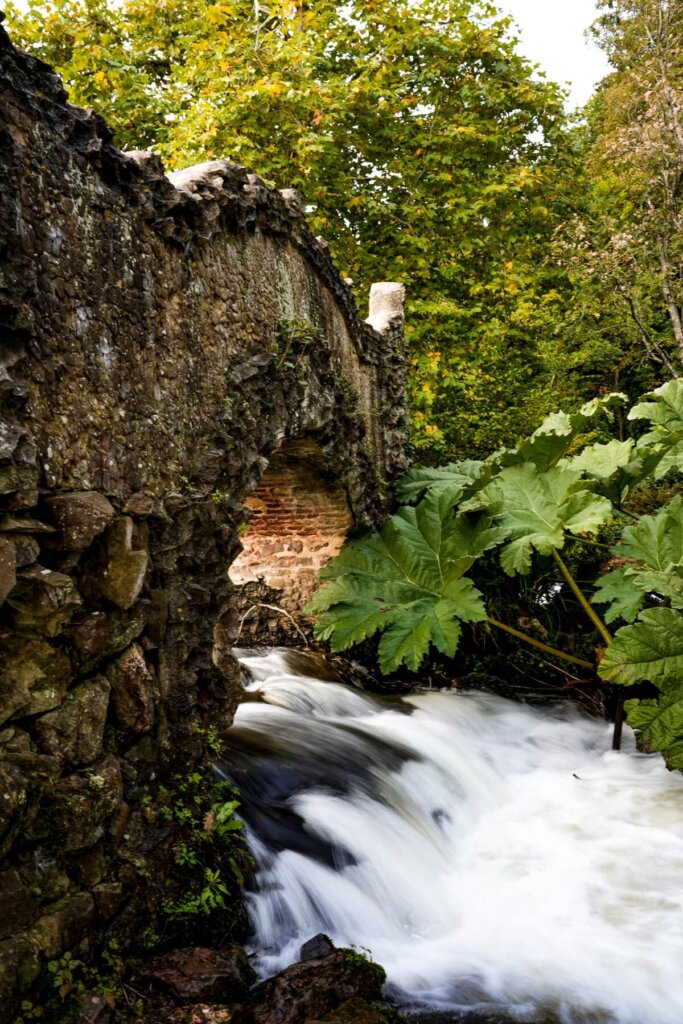
Visit Dunster Castle and Watermill
A visit to this ancient fairytale castle should definitely be on your Exmoor National Park weekend itinerary. Perched on a hill in the Somerset section of the national park, Dunster Castle is managed by the National Trust. It has a long and interesting history that you can learn more about during your visit.
We loved walking around the terraced garden, which contains Mediterranean and subtropical plants. The best part of the garden was that it gave us some fantastic views of the Bristol Channel and surrounding area. Don’t forget to check out the Victorian watermill too.
Top Tip. If you want to get a great overview of the castle, walk along the A39 away from the castle after your visit.
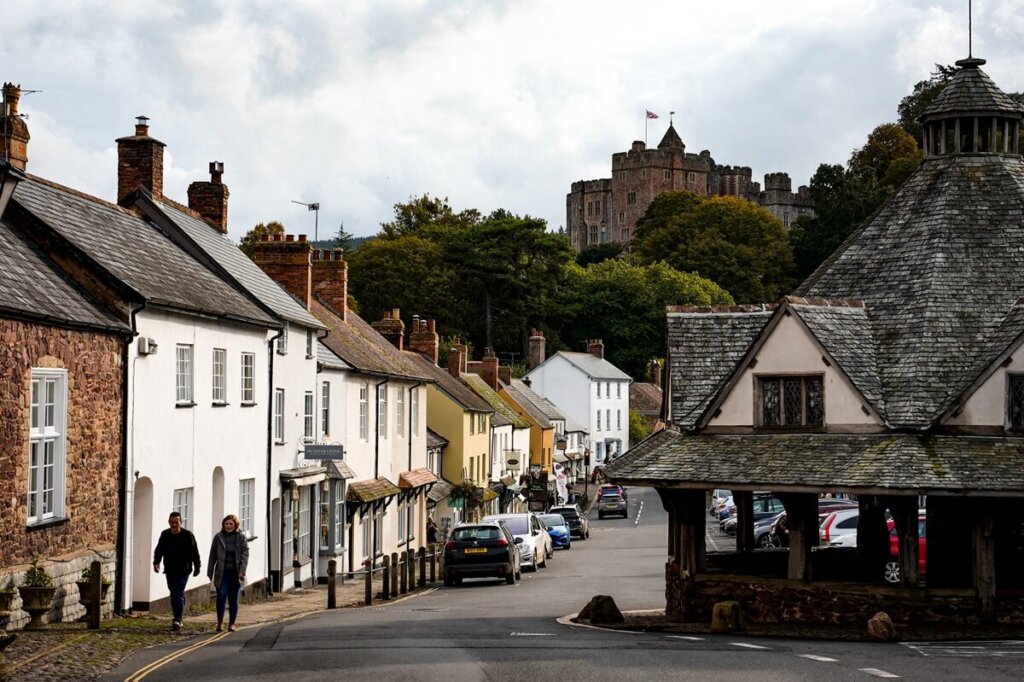
Walk Around Dunster Village
After visiting the castle, make sure to walk into Dunster, which is one of the prettiest villages in Exmoor National Park.
Dunster used to be a thriving trade port until the sea retreated and left the village about a mile or so inland. After that it became the centre of the wool trade.
The village’s main street is filled with tea rooms, pubs, small shops and historical features. One of the unmissable landmarks is the Yarn Market where people used to trade wool and yarn. Today, this octagonal structure is a Grade I listed building. From the top of the street you can also enjoy the view back down towards Dunster Castle.
Another lovely landmark to see in Dunster is the 15th century Gallox Bridge. This packhorse bridge is also a Grade I listed building, located at the southern edge of the village.
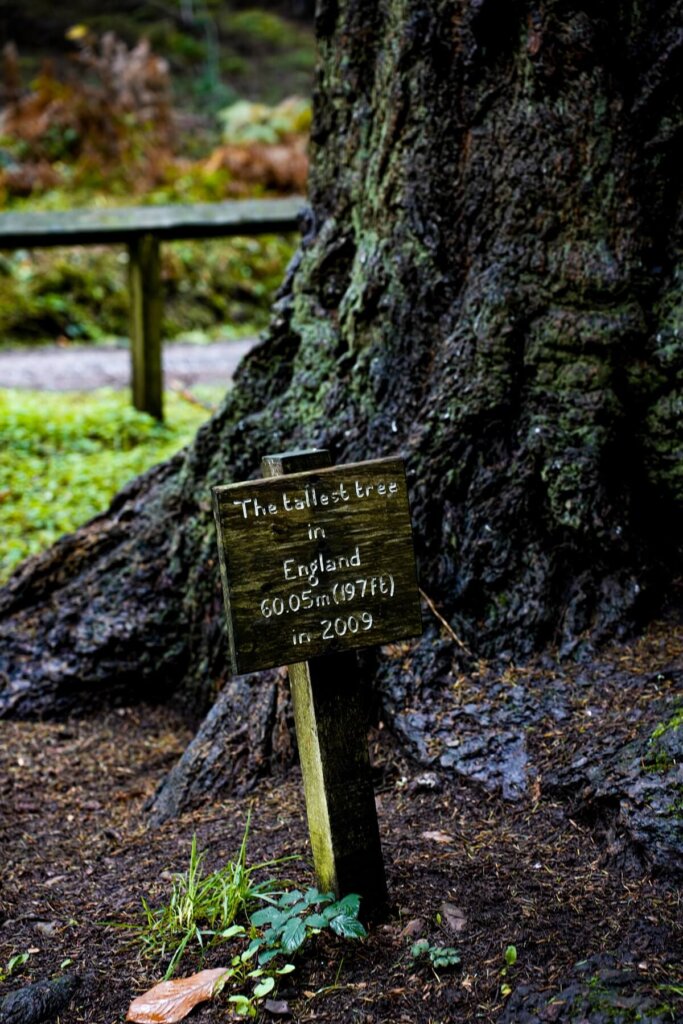
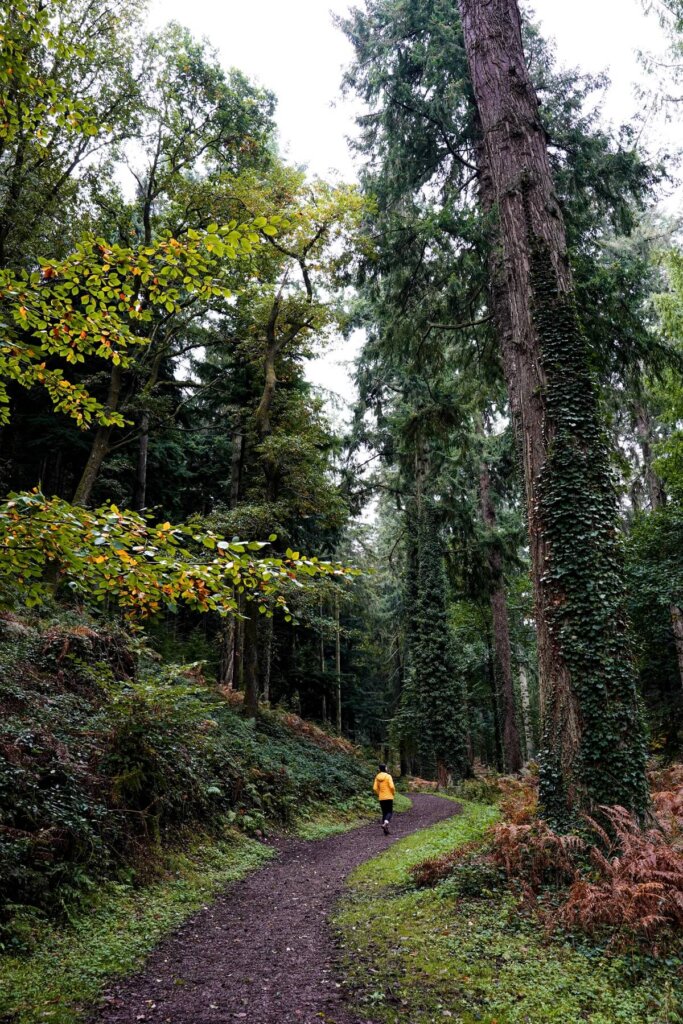
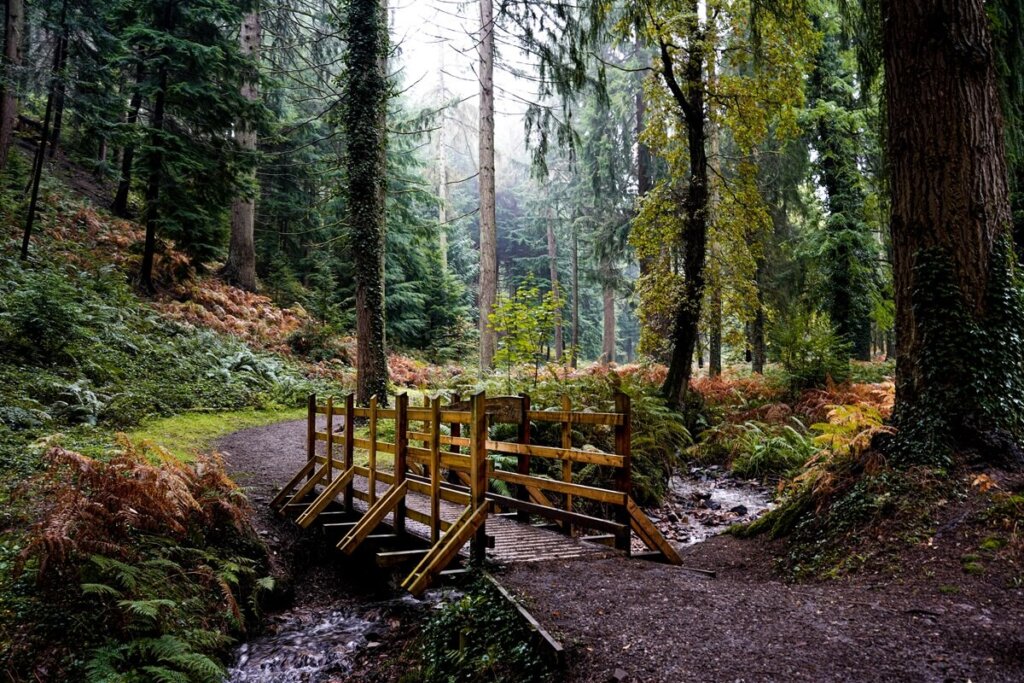
Walk Along the Nutcombe Bottom, Tall Trees Trail
A short but fun thing to do near Dunster is to complete the Tall Trees Trail located at Nutcombe Bottom. This walking path took us through a lovely forest alongside a stream, where some of the trees date from the 1870’s. It’s also home to a 60m tall (197 ft) Douglas fir which is apparently the tallest tree in England. Or, at least it was in 2009 according to the sign.
You can just opt for a short walk or combine it with a visit to Bat’s Castle, which is the remains of an ancient fort with beautiful views of the surrounding landscape.
Directions and parking. The trail is located to the south-west of Dunster village. You can park your car at Nutcombe Bottom Carpark. Alternatively, you can also complete a longer hike from Dunster.
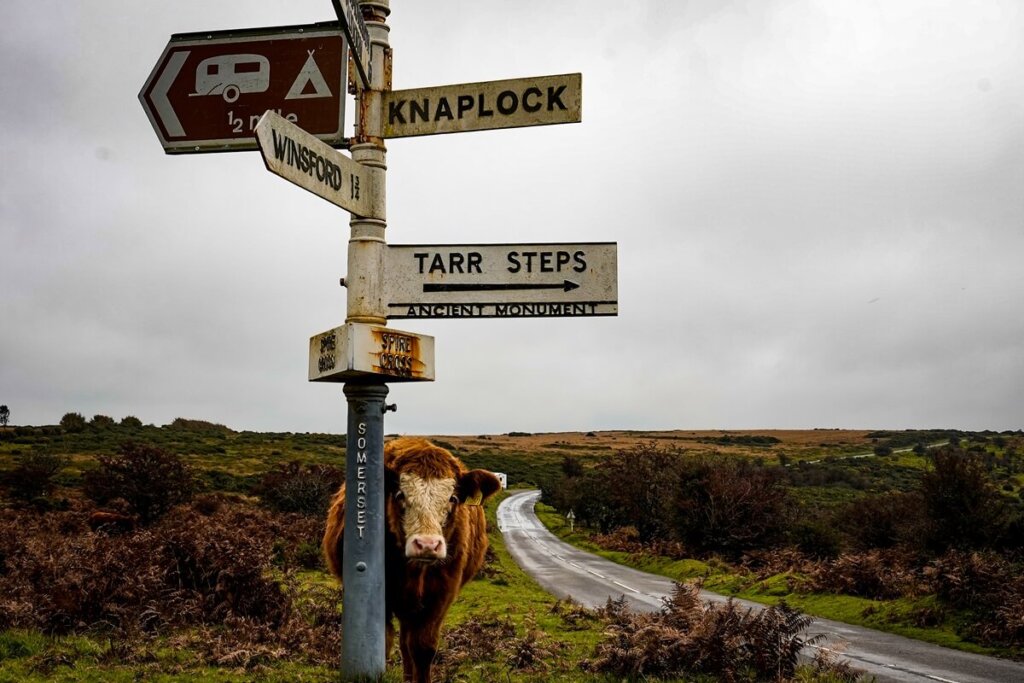
How to Get to Exmoor National Park
By Car. Since it’s one of the more remote national parks in the country, the easiest way to get to and get around Exmoor is by car. We had our own vehicle but you could also consider hiring a car if you don’t own one. You can use Google Maps to plan your route. When following the Sat-Nav, bear in mind that post codes often refer to much bigger areas here. You can check out more of our driving related tips below.
By Public Transport. Whilst it may be a bit more effort, it’s not impossible to visit Exmoor using public transport. If you’re coming from further afield, you can plan your journey in Trainline. Some of the closest train stations are Taunton, Tiverton, and Barnstaple.
Once you’re in the area, you can then use local buses to get to the majority of attractions within the national park.
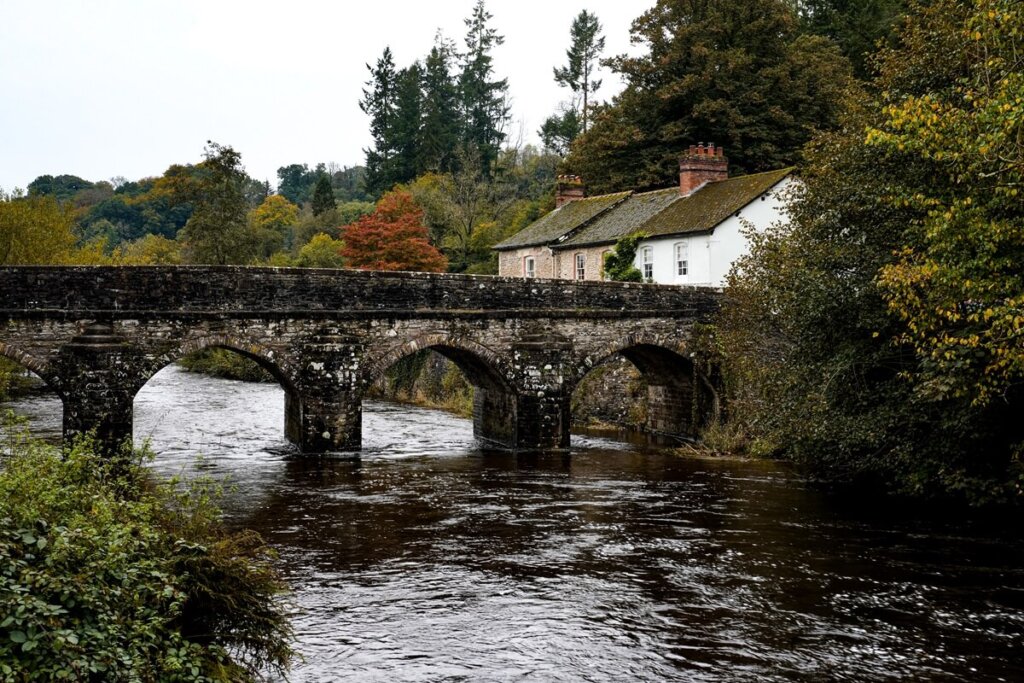
Tips for Visiting Exmoor National Park
Driving tips. The roads in Exmoor can be very narrow, so drive carefully. After rain and wind the roads are subject to flooding, and there could be debris on the road too. Not to mention that wildlife and people can also be walking on the roads.
Car parks. Many car parks are pay and display. At some of them you can pay using a mobile app, however quite a few of them only accept coins. Sometimes there won’t be any signal to download or use the app, so come prepared with some coins just in case.
Signal. Speaking of signal, it can be spotty when driving around depending on your phone provider. If you want to follow the map, then definitely download an offline version.
Consider getting a National Trust membership. There are plenty of sites managed by the National Trust in and around the national park. Entry fees can add up quickly, so if you want to visit multiple locations, we recommend signing up for a membership. Check out their website for more information.
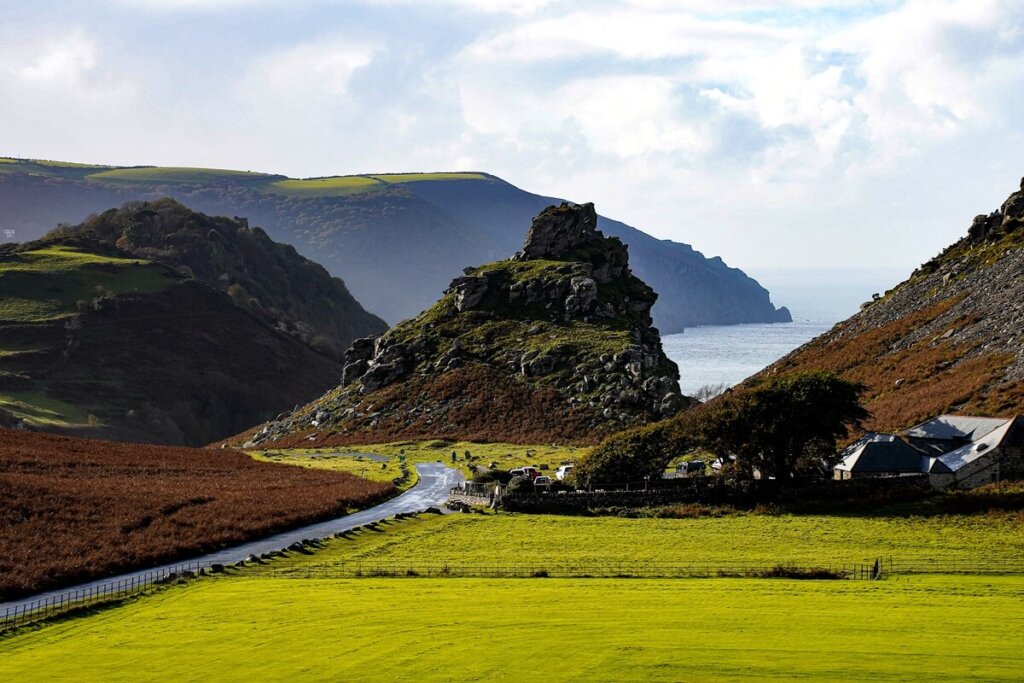
Final Thoughts on Spending a Weekend in Exmoor National Park
We didn’t think that such a small national park would be able to offer such a variety of activities and landscapes. It’s safe to say that we were blown away by Exmoor’s beauty, especially since we were visiting in October when everything was just so colourful. Whilst we had all sorts of weather conditions, from sunshine to thick fog and pouring rain, Mother Nature also treated us to some unique moments such as epic rainbows.
Have you ever been to Exmoor National Park before? If so, how much of the park did you manage to see? If not, would you add a visit to Exmoor in the near future? Let us know in the comments below.

